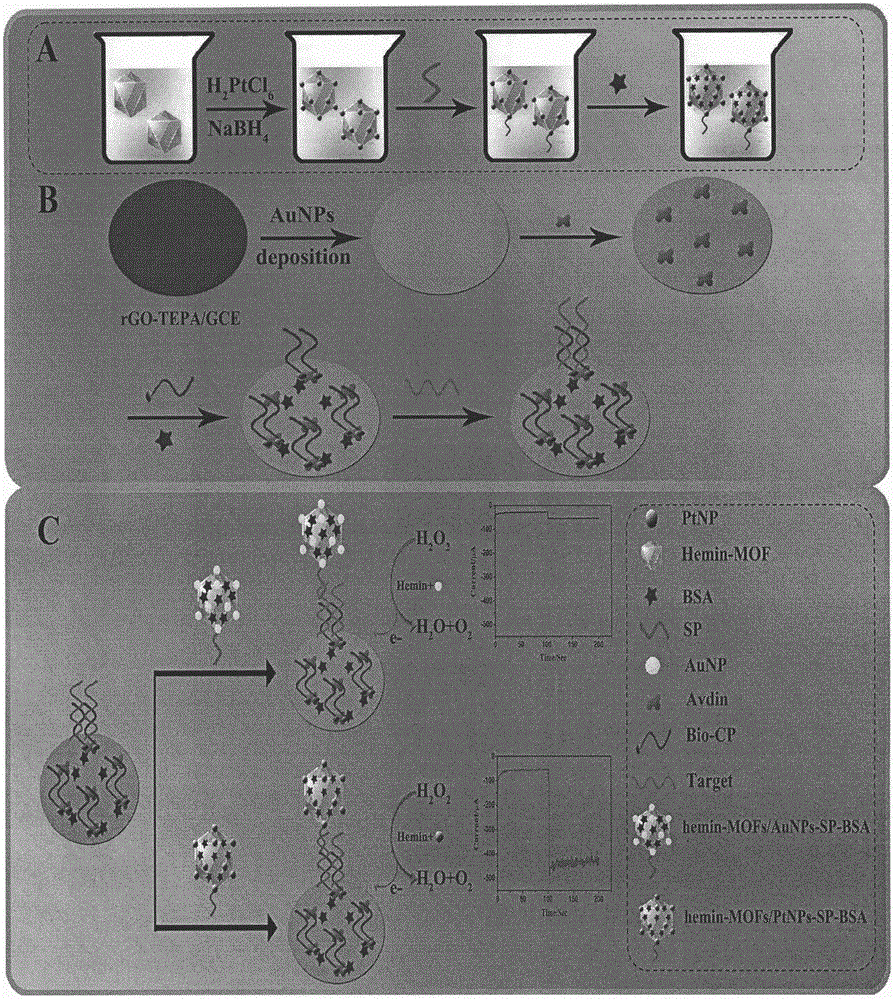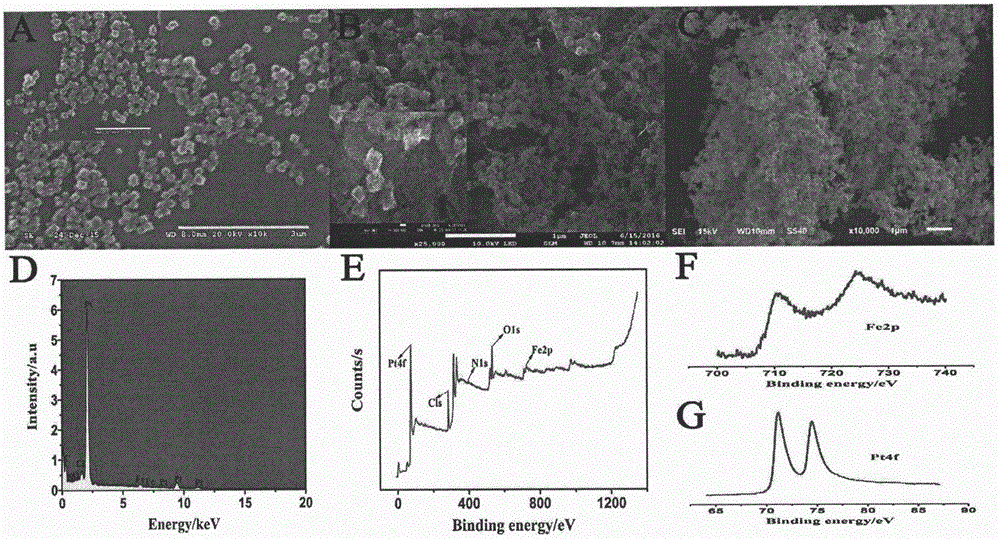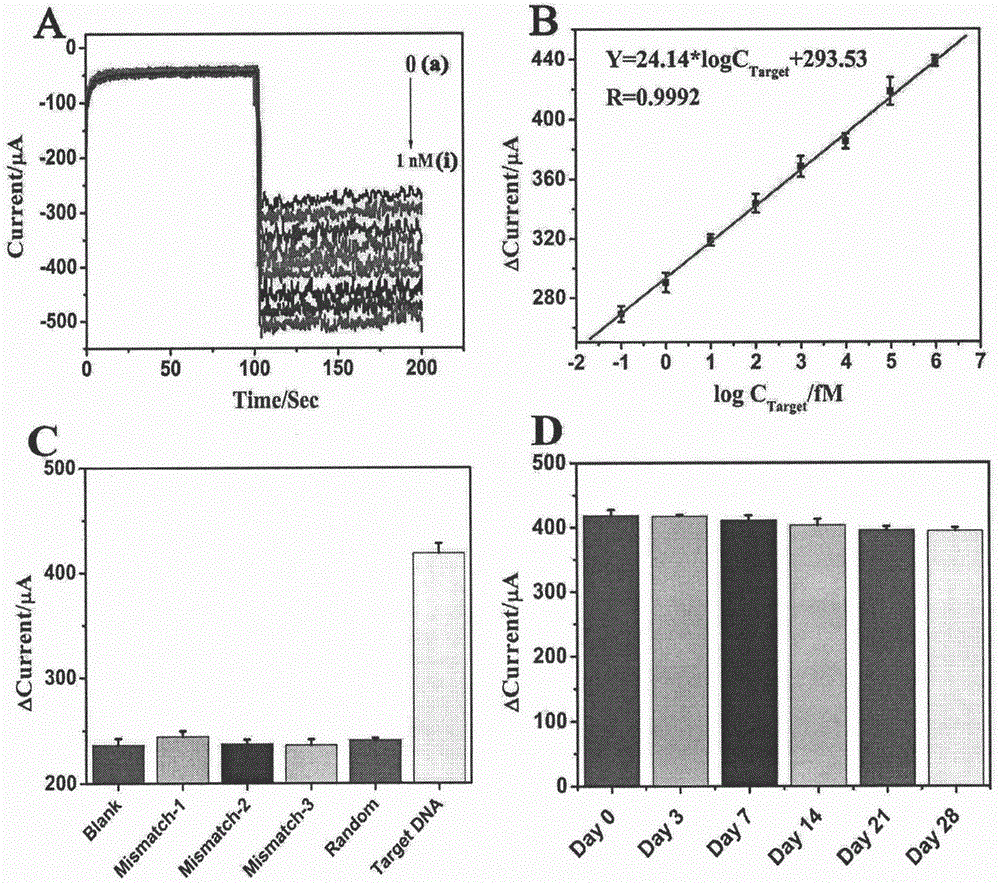Preparation method of electrochemical sensor for FGFR3 (fibroblast growth factor receptor 3)-1138G>A gene polymorphism detection
A gene polymorphism, electrochemical technology, applied in scientific instruments, instruments, measuring devices, etc., can solve the problems of poor dispersion and short catalytic life, and achieve the effect of simple method, easy commercialization, and increased density of capture probes
- Summary
- Abstract
- Description
- Claims
- Application Information
AI Technical Summary
Problems solved by technology
Method used
Image
Examples
Embodiment 1
[0044] Step 1. 0.126g 2-aminoterephthalic acid, 0.187g FeCl 3 ·6H 2 O and 0.226g Hemin were dissolved in 15mL DMF and mixed well. The above solution was heated in an oil bath for 4 hours, and 200 μL of glacial acetic acid was added 15 minutes after the start of heating, and the temperature of the solution was controlled to cool down to room temperature after the heating was completed. The obtained solution was centrifuged at 10000 / min for 5 minutes, and washed three times with DMF, absolute ethanol and ultrapure water respectively. The resulting product was dried under vacuum for 24 h and redispersed in ultrapure water to form 1 mg mL -1 system to obtain Hemin-MOFs;
[0045] Step 2. 1 mL H 2 PtCl 6 (1%) add 1mL (1mg mL -1 ) Hemin-MOFs solution, vigorously sonicate for 15 min. The resulting solution was placed on a magnetic stirrer, and under stirring at 400 rpm, 2 mL of NaBH was added dropwise 4 (0.1M) to the solution from brown to black, and continue to stir for 30min...
PUM
 Login to View More
Login to View More Abstract
Description
Claims
Application Information
 Login to View More
Login to View More - R&D
- Intellectual Property
- Life Sciences
- Materials
- Tech Scout
- Unparalleled Data Quality
- Higher Quality Content
- 60% Fewer Hallucinations
Browse by: Latest US Patents, China's latest patents, Technical Efficacy Thesaurus, Application Domain, Technology Topic, Popular Technical Reports.
© 2025 PatSnap. All rights reserved.Legal|Privacy policy|Modern Slavery Act Transparency Statement|Sitemap|About US| Contact US: help@patsnap.com



